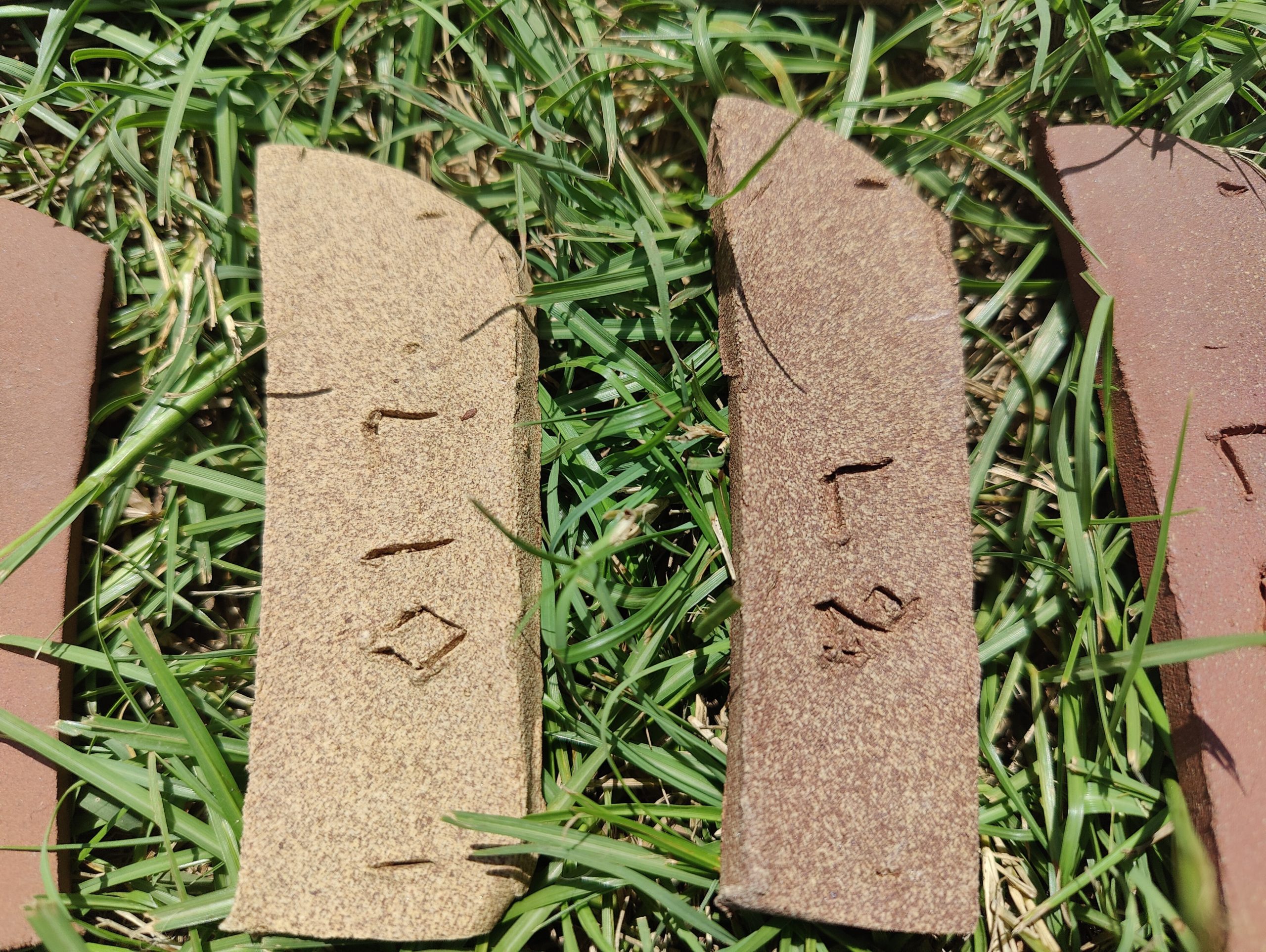These are two batches of test tiles with limestone and bone ash for the flux. Because calcium can make a very narrow firing range, I mixed two batches to fire on my middle shelf and bottom shelf to compare porosities as my kiln has about 1/2 a cone variation. My bone ash tests may be a bit off as I don’t think I got the B8 and maybe B6 well mixed. The extra tile (marked RC) is my new batch of reclaim that needs testing.
The limestone ones with 10 and 8 are really fascinating though. I originally had no idea what is causing this effect. The porosity tests didn’t give any info as none of the tiles were vitrified. The porosities are bone ash 4, 6, and 8 were 11%, 11% and 10.6% respectively and the limestone 6, 8, and 10 where 13.4%, 13.6, and 13.5% respectively.
After doing quite a bit of research, I was able to find a single reference in an old clay chemistry paper. Following that, reference lead me to this from a book published in 1906.
“If, however, the temperature is raised higher than is required simply to drive off the carbon dioxide, and if some of the mineral particles soften, a chemical reaction begins between the lime, iron, and some of the silica and alumina of the clay, the result being the formation within the clay of a new silicate of very complex composition. The effects of this combination are several: In the first place, the lime tends to destroy the red coloring of the iron and imparts instead a buff color to the burned clay. Seger found that this bleaching action, if we may call it such, is most marked when the percentage of lime is three times that of the iron. It should be remembered, however, that all buff-burning clays are not all calceous, and that a clay containing a low percentage of iron oxide may also give a buff body. Another effect of lime, if present in sufficient quantity, is to cause the clay to soften rapidly, thereby sometimes drawing the points of incipient fusion and viscosity within 41.6 C. (75 F.) of each other. This rapid softening of calcareous clays is one of the main objections to their use, and on this account also it is not usually safe to attempt the manufacture of vitrified products from them, but, as mentioned under Magnesia, the presence of several percent of the latter substance will counteract this. It has also been found possible to increase the interval between the points of incipient fusion and viscosity by the addition of quartz and feldspar. “
https://archive.org/stream/claystheiroccurr00riesrich/claystheiroccurr00riesrich_djvu.txt
So that explains a bit of what is happening with these test bars. I’d like to see if it’s possible to keep the bleaching effect of the limestone close to vitrification. Since the author says that adding magnesia, quartz and feldspar can increase the interval between fusion and viscosity, I will be doing more tests. However, I’ve ordered a tiny test kiln, and it will be a couple of months before it gets here. So, I probably won’t finish these tests until then.




